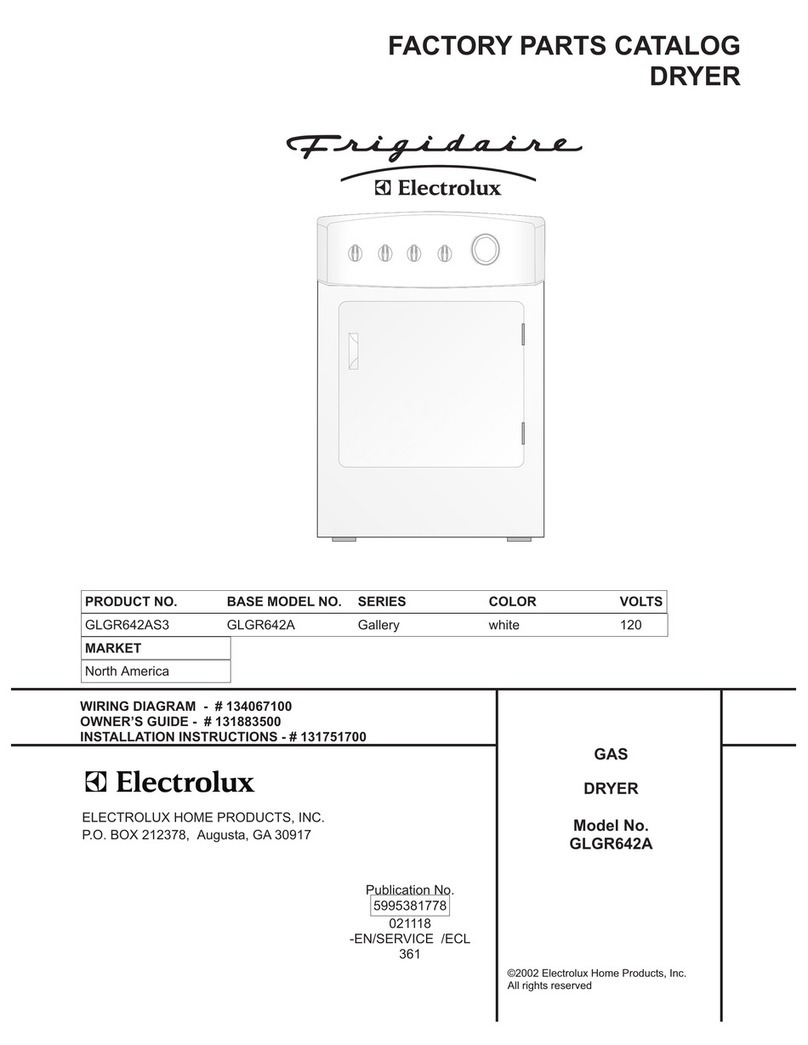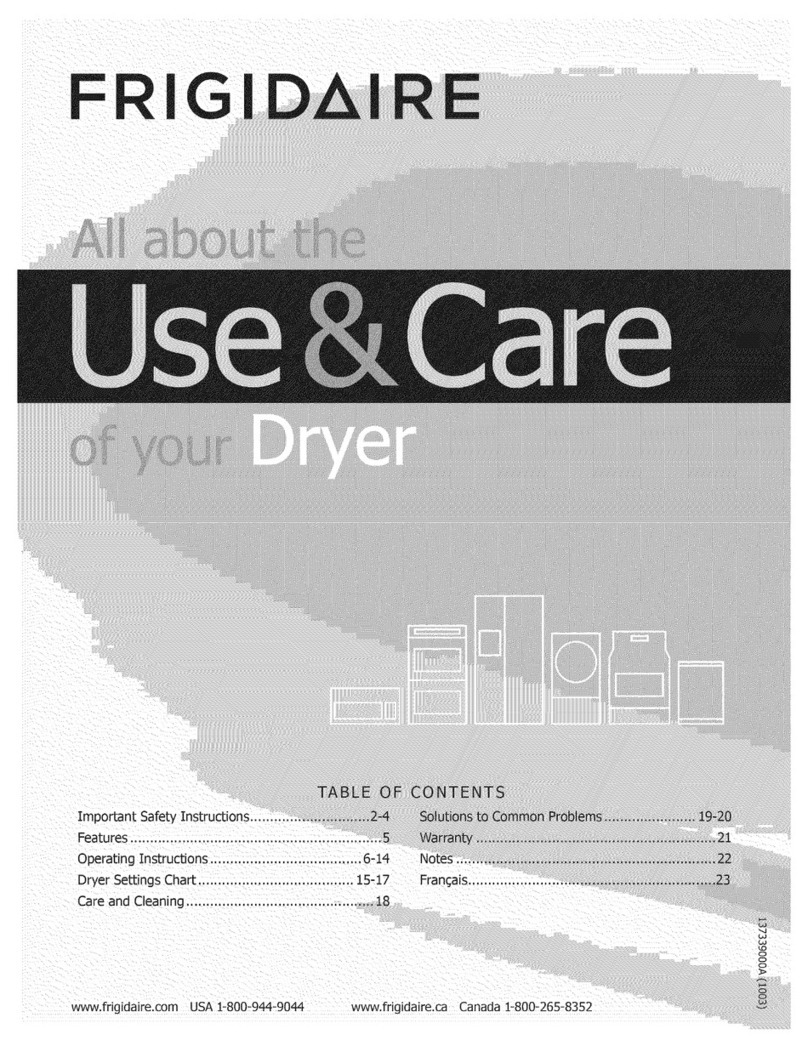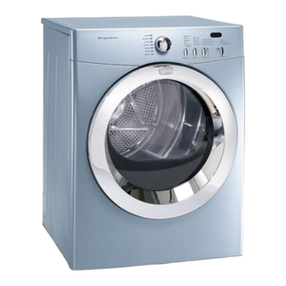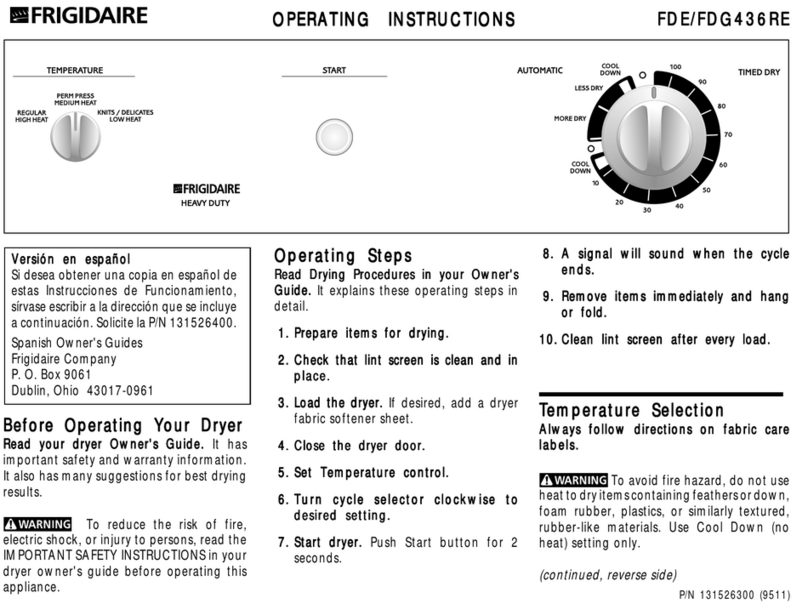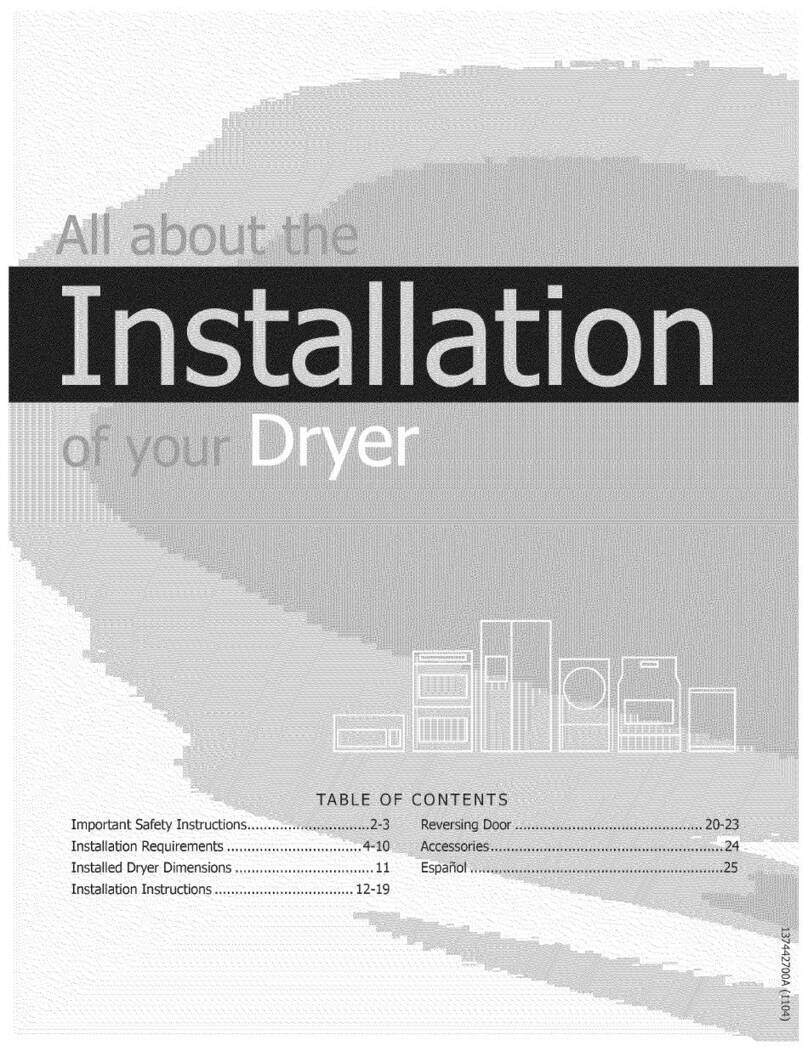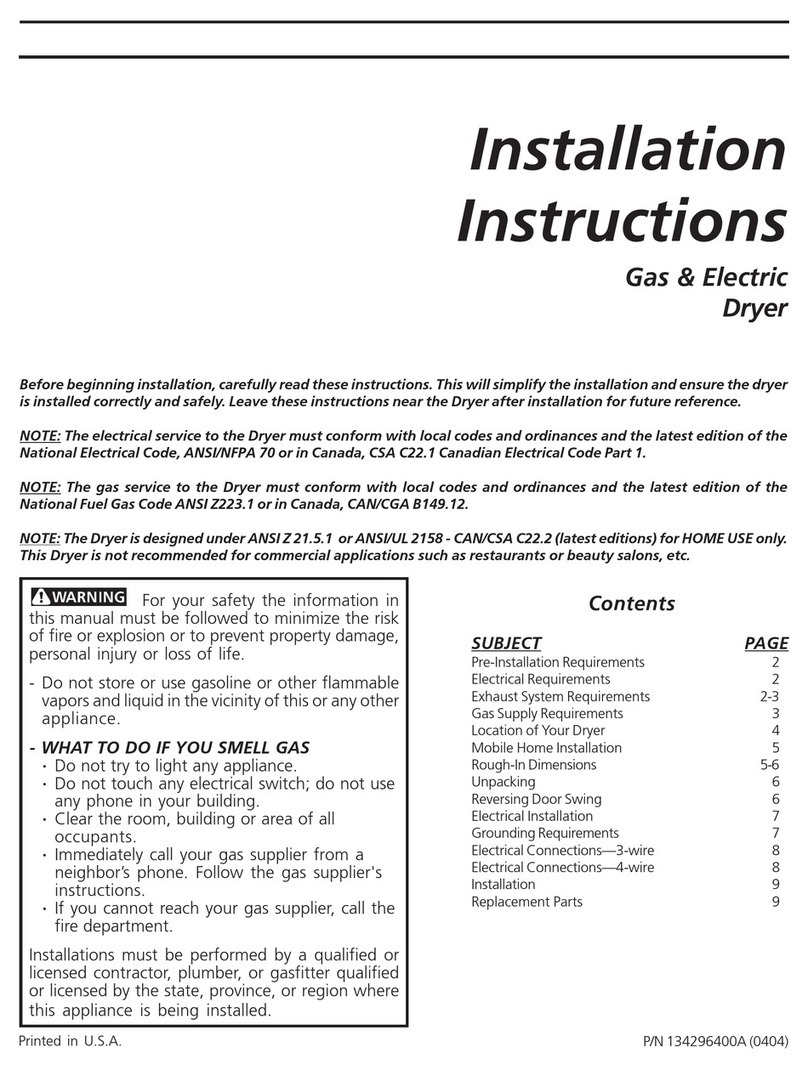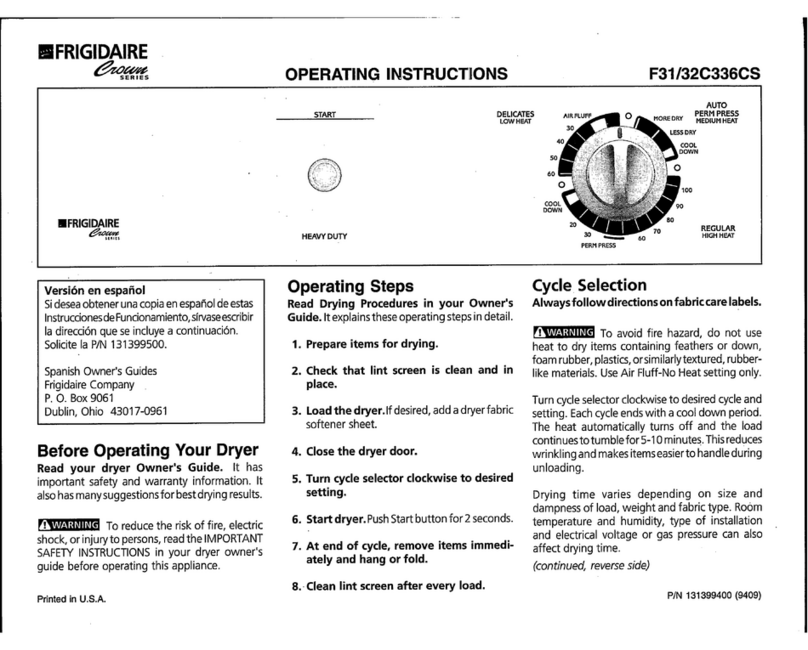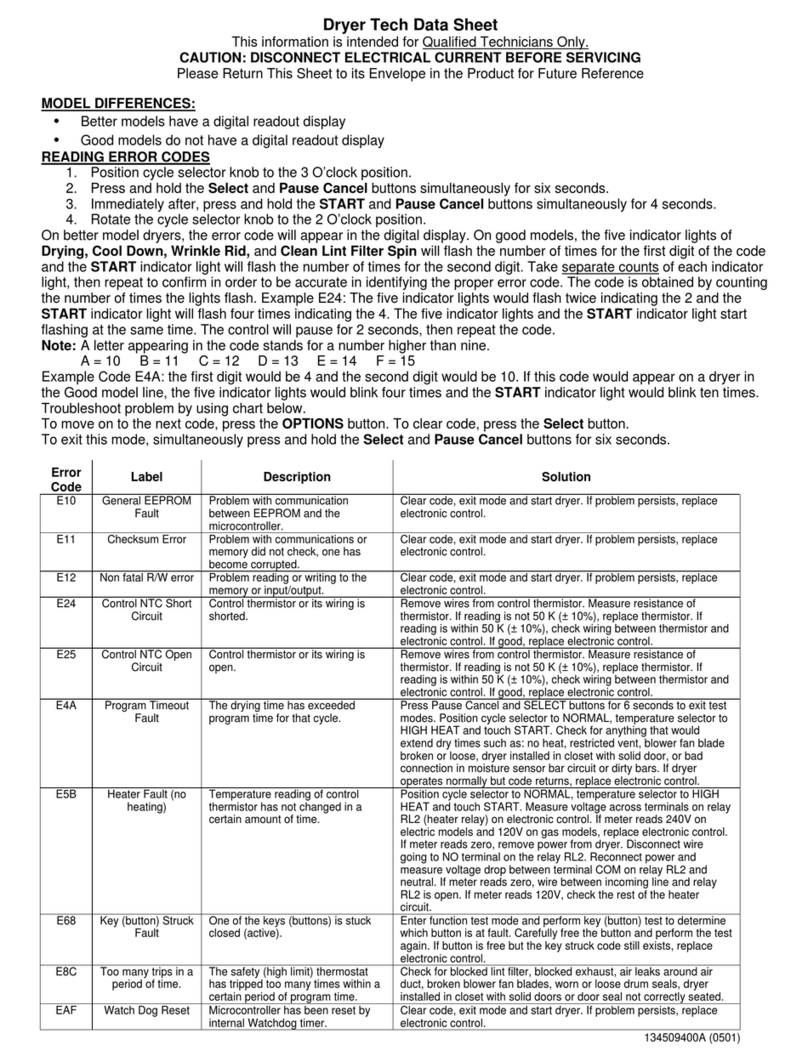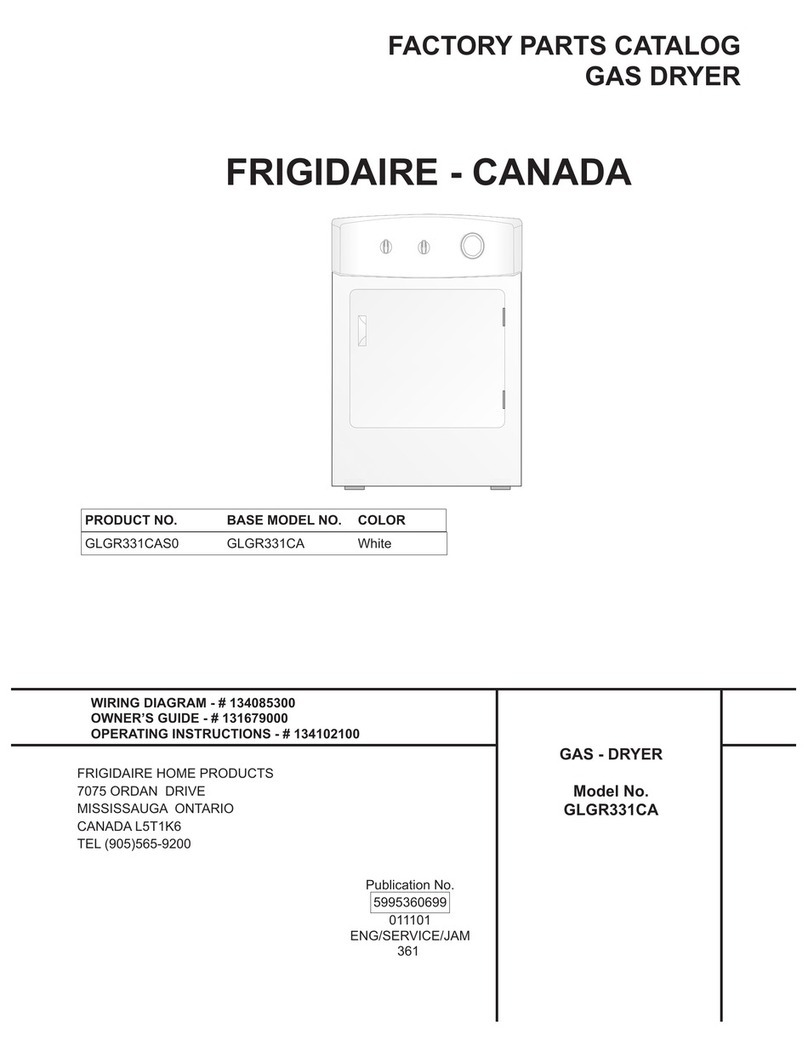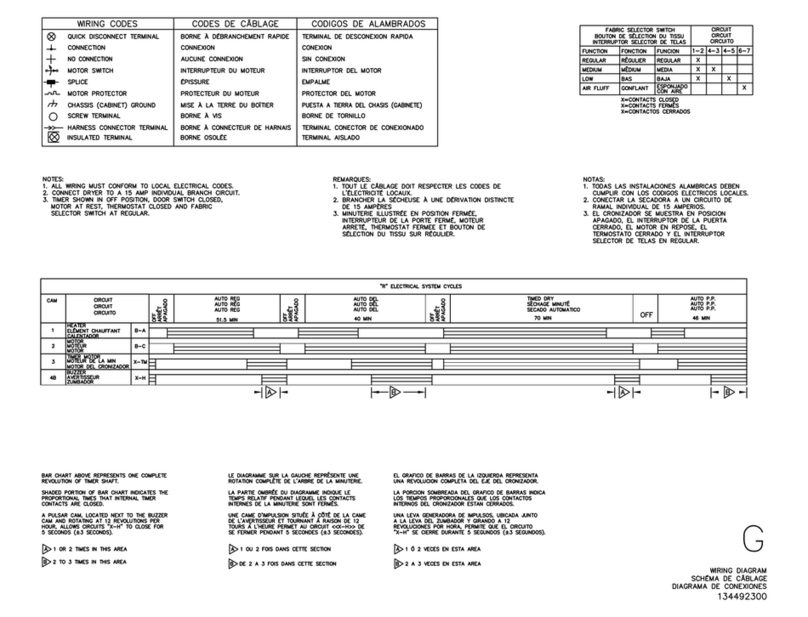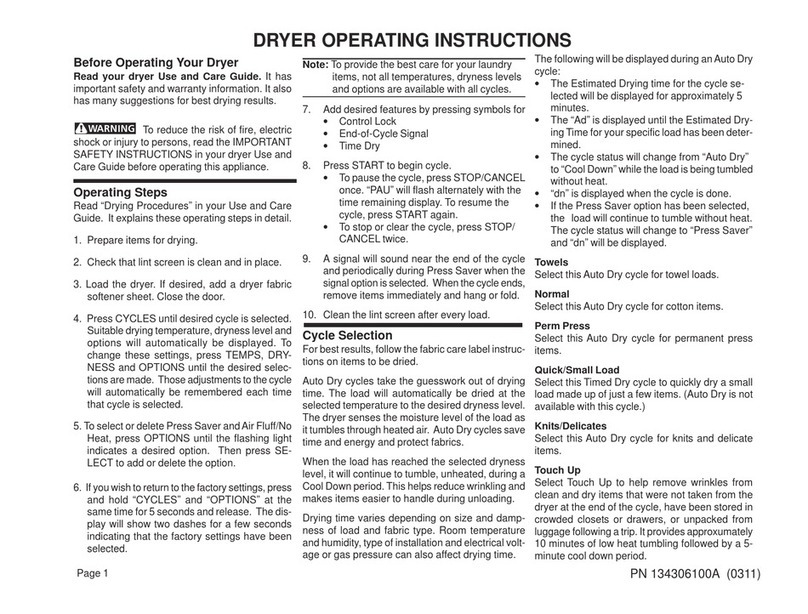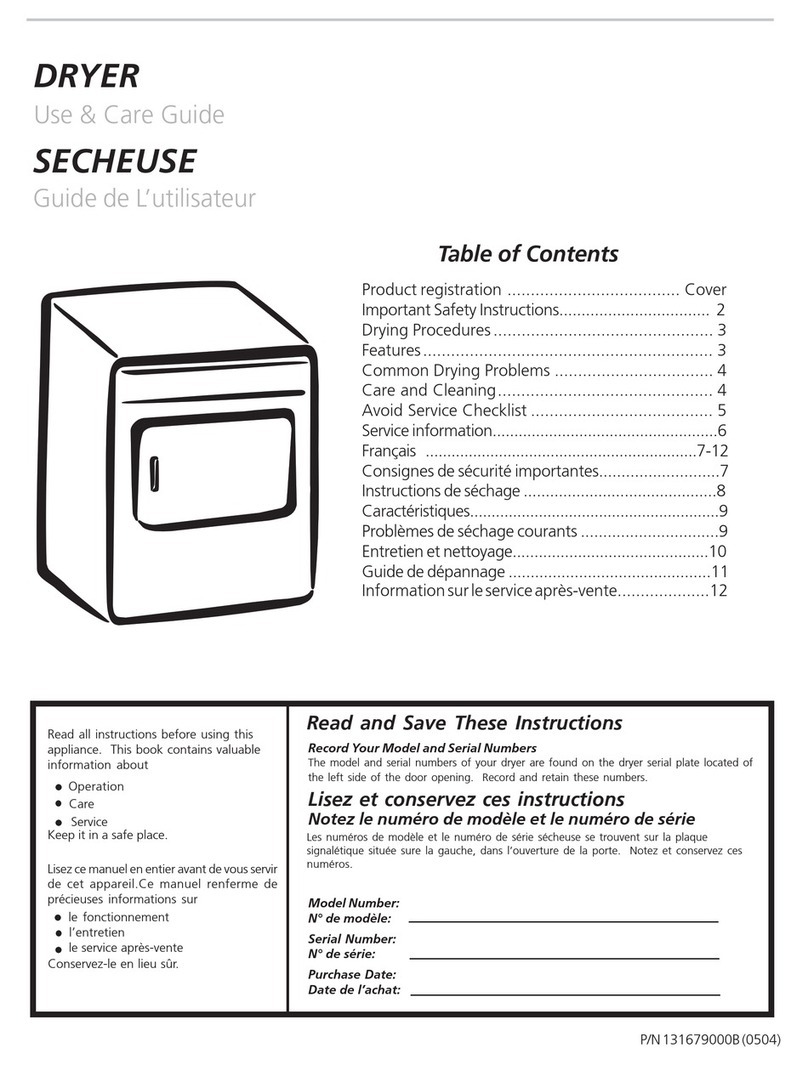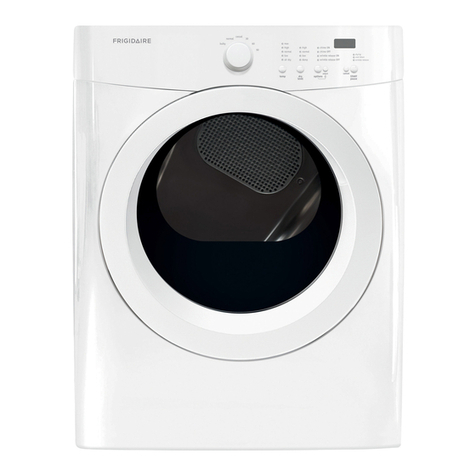
PRE-INSTALLATION REQUIREMENTS
Tools and Materials Required for Installation:
1. Phillips head screwdriver.
2. Channelqock adjustable pliers.
3. Carpenter's level.
4. Flat or straight blade screwdriver.
5. Duct tape.
6. Rigid or flexible metal 4 inch (10.2 cm) duct.
7. Vent hood.
8. Pipe thread sealer (Gas).
9. Plastic knife.
10. I/2 inch open end wrench.
ELECTRICAL REQUIREMENTS
ELECTR/CDryer ]
CIRCUIT- Individual 30 amp. branch circuit fused with 30 amp.
minimum time delay fuses or circuit breakers.
POWER SUPPLY- 3 wire, 240 volt, single phase, 60 Hz,
Alternating Current. (Canada - 240 volt, single phase, 60 Hz,
Alternating Current.)
POWER SUPPLY CORD KIT - Tile dryer MUST employ a 3-
conductor power supply cord NEMA 10-30 type SRDTrated at
240 volt AC minimum, 30 amp., with 3 open end spade lug
connectors with upturned ends or closed loop connectors and
marked for use with clothes dryers. If being installed in a
manufactured (raobile) horse, the dryer MUST employ a 4-
conductor power supply cord NEMA !4-30 type SRDTor ST(as
required) rated at 240 volt AC minimum, 30 amp., with 4 open
end spade lug connectors with upturned ends or closed loop
connectors and marked for use with clothes dryers. See
ELECTRICALCONNECTIONSFORA 4-WIRE SYSTEM.
(Canada - 4-wire power supply cord isinstalled on dryer.)
OUTLETRECEPTACLE- NEMA 10-30R receptacle to be located
so the power supply cord is accessiblewhen the dryer is in the
installed position. (Canada - NEMA 14-30R receptacle.)
POWER SUPPLY
OUTLET
RECEPTACLE
(COPPER)
SUBJECTTO LOCAL REGULATIONS NEMA 1O-3OR(COPPER)
I GASDd/ef 1
CIRCUIT - Individual 15 amp. branch circuit fused with a 15
amp. maximum time delay fuse or circuit breaker.
POWER SUPPLY - 3 wire, 120 volt single phase, 60 Hz,
Alternating Current.
NOTE: Do not under
any d_:umstances
remove grounding
prong from plug.
POWER SUPPLYCORD - The dryer isequipped with a 120 volt
3-wire power cord.
EXHAUST SYSTEM REQUIREMENTS
Useonly 4 inch (10.2 cm) diameter (minimum) rigid or flexible
metal duct and approved vent hood which has a swing-out
damper(s) that open when the dryer is in operation. When the
dryer stops, the dampers automatically close to prevent drafts
and the entrance of insects and rodents. Toavoid restricting the
outlet, maintain a minimum of 12 inches (30.5 cm) clearance
between the vent hood and tile ground or anyother obstruction.
The following are specific requirements for
proper and safe operation of your dryer Failure to follow
these instructions can create excessive drying times and
fire hazards.
Do not use plastic flexible duct to exhaust the dr,e/_£_.
Excessivelint can build up inside exhaust system and create a
fire hazard and restrict air flow. Restricted air flow will increase
dryer times. If your present system ismade up of plastic duct or
metal foil duct, _)lace it with a rigid or flexible metal duct.
Ensure the present duct is free of any lint prior to instal/ing
dryer duct.
If the dryer isnot exhausted outdoors somefine lint will be
expelled into the laundry area. An accumulation of lint in any
area of the home (:an create a health and fire hazard. The
dryer exhaust system MUST be exhausted to the outside
of the dwel/ing r.
Do not allow combustible materials (for example: clothing_
draperies/curtains, paper) to come in contact with exhaust
s_stem. Tile dryer MUSTNOT be exhausted into a chimney, a
wall, a ceiling, or any concealed space of a building which can
accumulate lint, resulting in a fire hazard.
Do not exceed tile length of duct F£)eor number of elbows
allowed in the "MAXIMUM LENGTH" charts. Lint can
accumulate in the exhaust system, plugging the system and
creating a fire hazard, as well as increasing drying times.
_Do not screen the exhaust ends of the vent system, nor use
any screws or rivets to assemble the exhaust system. Lint can
become caught in the screen, on the screws or rivets, clogging
the duct work and creating a fire hazard as well as increasing
drying times. Usean approved vent hood to terminate the duct
outdoors, and sealall joints with duct tape. All male duct pipe
fittings MUST be installed downstream with tile flow of air.
Exp/osion hazard. Do not install the dryer
where gasoline or other flammables are kept or stored. If the
dryer isinstalled in a garage, it must be a minimum of 18 inches
(45.7 cm) above the floor. Failure to do so can result in death,
explosion, fire or burns.

